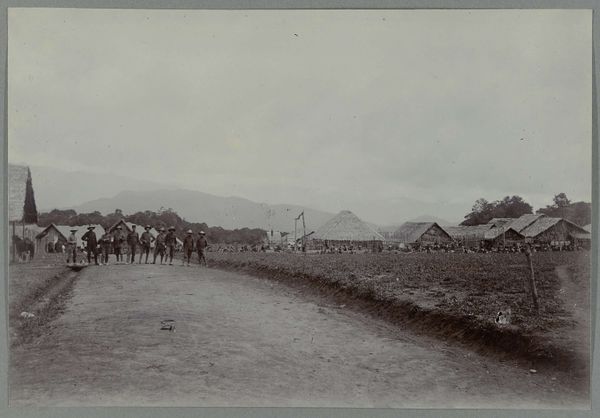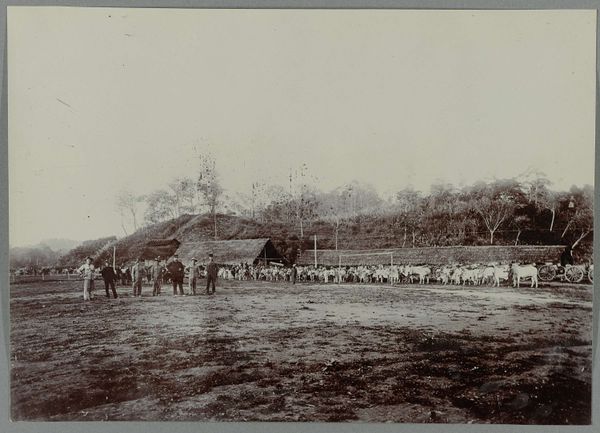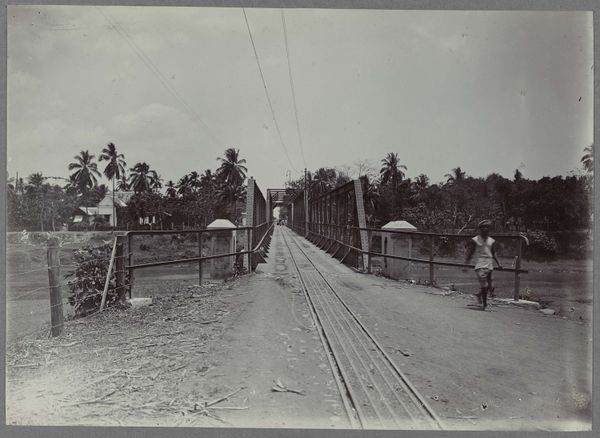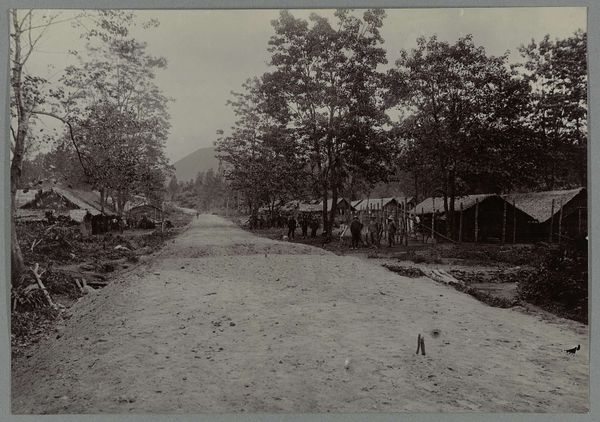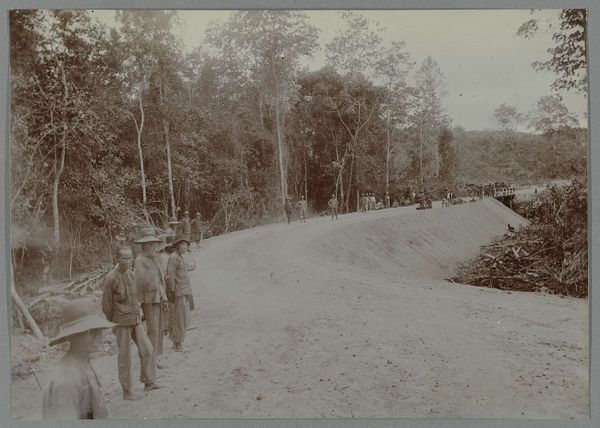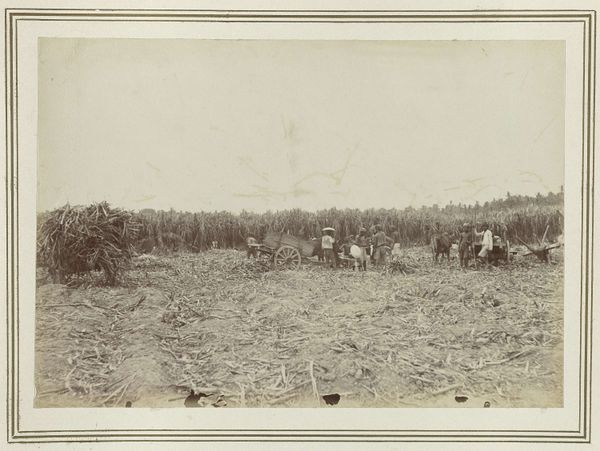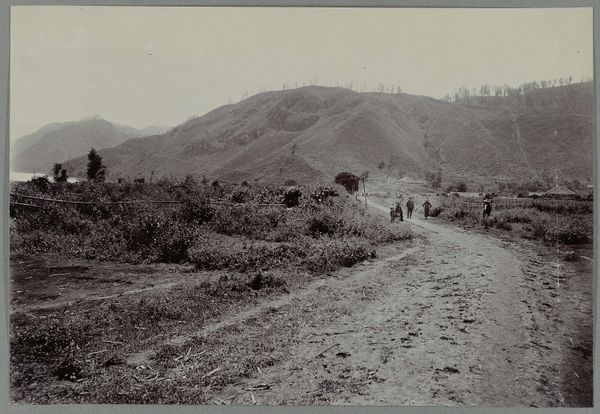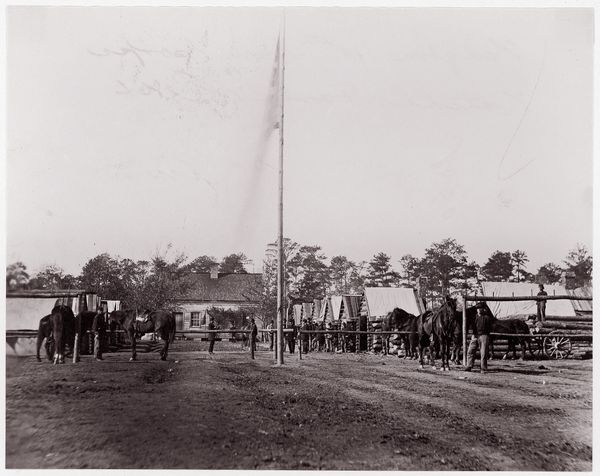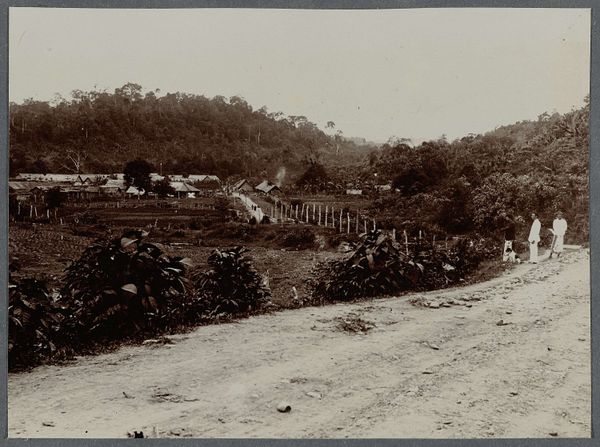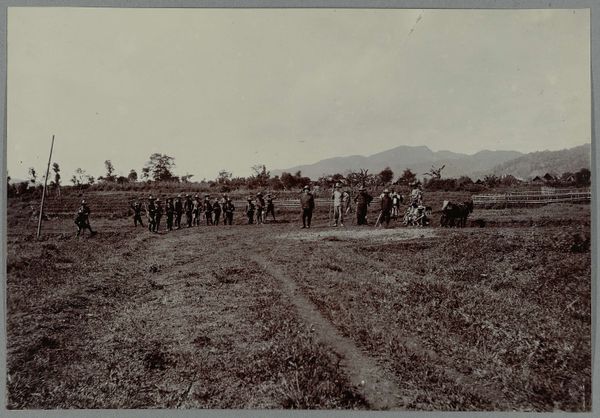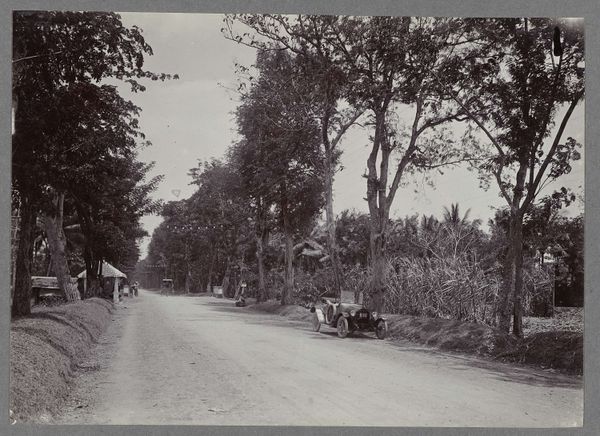
print, photography
# print
#
landscape
#
nature
#
photography
#
geometric
#
history-painting
#
prehistoric
#
realism
Dimensions: height 138 mm, width 200 mm
Copyright: Rijks Museum: Open Domain
Curator: This is a photograph entitled "Kruispunt van de nieuwe met een oude weg," or "Intersection of the new with an old road," dating from sometime between 1903 and 1913. Editor: It strikes me as strangely still. The muted tones, the composition...it feels posed, almost like a stage for a narrative we don’t quite grasp. Curator: Well, consider the subject. The composition is dominated by strong diagonal lines creating a stark contrast between the land being cultivated versus more native bush. The verticals punctuate these strong horizontal landforms. The image speaks to progress, or perhaps its imposition. Editor: You’re focusing on the stark lines of the new road. For me, the people tell the story. There's an ambiguous air about these figures. Look at their arrangement. There's a curious blend of purposeful action and almost passive observation. Who are these people? Are they the road builders, supervisors, or something else? It reminds me of colonial tableaux where there is no single vantage. Curator: Precisely. That staged feeling might actually highlight the very nature of photographic realism at this historical juncture. The photograph captures a moment deliberately constructed. Note that tonal gradations give considerable spatial recession and volume to the masses. We’re made acutely aware of how representation can create as much as reflect reality. The interplay of light and shadow emphasizes the geometrical order inherent to both natural forms and those imposed. Editor: I would posit that that ‘geometric order’ tells of larger socioeconomic narratives around ideas of development at that time. This image reflects the public’s fascination with such modernization efforts, framing it in an accessible form while normalizing, in its subtle ways, labor and colonization. Curator: It seems the photograph’s real strength lies in this inherent ambiguity. Its formalism compels the viewer to ask these questions of progress and impact and the imposition of progress on previous arrangements. Editor: It does invite us to confront a complicated legacy, forcing one to reflect on this chapter in how such advancements alter people and their lands forever. It becomes more than just an intersection of two roads; it’s an intersection of very different ideas and experiences.
Comments
No comments
Be the first to comment and join the conversation on the ultimate creative platform.
